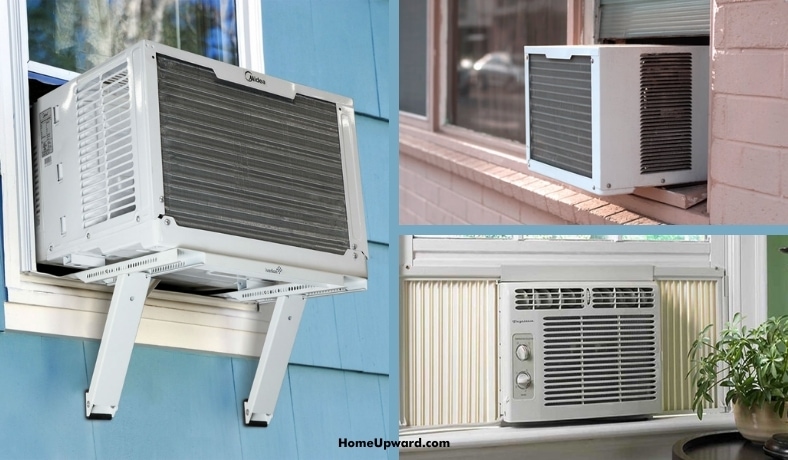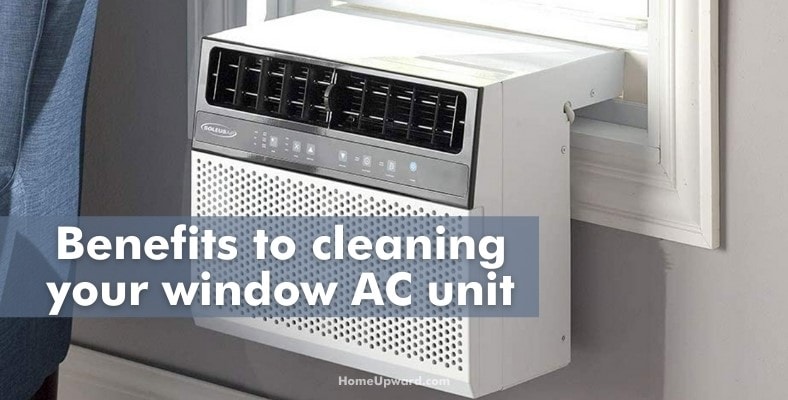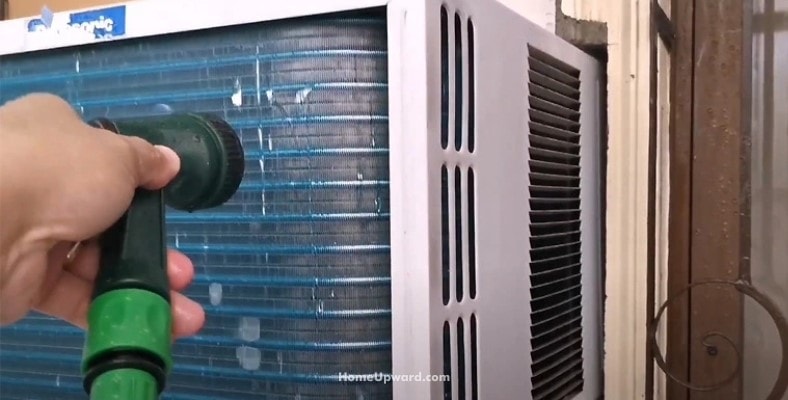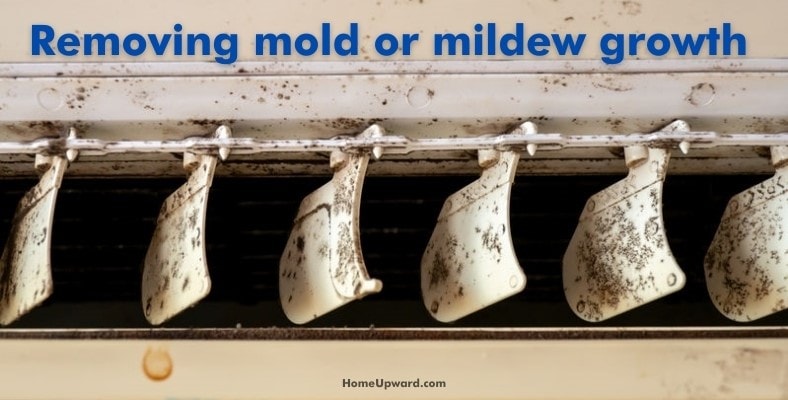The problem with window AC units is that they’re heavy and a real hassle if you need to pull them out of a window.
Not to worry: I’ll explain how cleaning a window air conditioner without removing it is possible and in fact, fairly easy!
Contents
Benefits to Cleaning Your Window AC Unit
Cleaning a window AC provides many more benefits than just a better-running system. A proper clean also ensures that:
- You’ll have air free of dust or dirt that leads to respiratory issues or worsening allergies.
- Your unit will run quieter, as it won’t have to work as hard to get fresh air out.
- You’ll enjoy a long-term value out of your unit, saving you plenty in costs and service.
- You will prevent mold and mildew from sprouting inside the unit.
- Your air won’t smell musky.
Why Do Some Air Conditioners Smell Bad When They Start?
Speaking of a musky scent, you may be wondering why your air conditioner releases such an unpleasant stench when you turn it on. There are a few prominent reasons for this, including the possibility of mold or fungus growing in your unit, improper draining of water, leaking fluids, or a short-circuited part. From time to time, a small animal may have also entered the unit and died, causing an especially vile stench.
Any of these problems can lead to you spending more money and dealing with major headaches. That’s why routinely cleaning and inspecting your window air conditioner can help keep your AC running smoothly and smelling nice.
Safe Cleaning Products and Items You’ll Need
When it comes to what products you’ll need for the cleaning process, you won’t have to get too crazy. In fact, you can probably gather everything you need right at home :
- A bucket you can fill with warm, soapy water
- A vacuum with a soft brush attachment
- Spray bottle filled with water and a couple of drops of detergent or bleach
- Spray bottle filled with mold or mildew remover
- Clothes you don’t mind getting dirty
- Newspaper to lay out under your unit
- Screwdriver
- Gloves
If you’d like to take as many precautions as possible, consider also sporting a face mask and safety goggles. These safety items are convenient if you encounter mold or mildew, ensuring you don’t breathe in any potential toxic air.
How to Clean an Air Conditioner in the Window
Once you’ve gathered all the necessary products and equipment, it’s time to get cleaning. Before grabbing the spray bottle and a cloth, it’s essential to understand which areas you’ll actually need to scrub.
Parts You’ll Need to Clean
Besides the filter, you’ll also need to wash or wipe down the grill, exterior of the unit, and cooling fins and coils. Different parts may require other cleaning methods.
How to Clean the Filter
- Unplug the AC unit. Since you’re working with water, cleaning the unit while still on could lead to an electric shock. Make sure your entire unit is disconnected.
- Remove the filter. Filters collect and prevent dirt, dust, pollen, and other debris from entering the air inside your home. As a result, they are often the dirtiest part of your AC unit and the first part to focus on. Each window AC unit will have a different way of taking out the filter, usually by either unscrewing the panel or sliding out the filter from the side. If you aren’t sure, look at your unit’s manual or Google your AC model.
- Clean the filter. If your filter is covered in a large amount of dust and hair, give it a quick vacuum. After this, soak the filter in the bucket of warm, soapy water until the debris clears and set it out to air dry.
- Remove and wash removable parts. Next up, you’ll want to remove the AC case. Use your screwdriver, and be mindful of where you place the tiny screws. Some find it helpful to have a small plate nearby to put the screws while working. See if you can easily remove any part of the framing or drain pan. Along with the grill, you can soak these in soapy water and place these to dry with the filter.
- Vacuum and clean the interior. Like with the filter, vacuum the interior down if you see any balls of dust or hair. Use your spray bottle with the detergent or bleach afterward to spray down and scrub the interior of your unit, and use a cloth to wipe it down. This step includes cleaning the coils and fan blades.
- Use your mold remover. If you do happen to see any mold or mildew buildup, spray the area with the bottle containing the mold remover. Depending on the amount of mold you find, you may have to seek out the service of a professional to remove the mold entirely.
- Comb the fins. Your AC unit fins are the aluminum sheets that move warm air away from the unit. If they get bent, it affects the efficiency of the AC unit as a whole. Now is when you can use the soft brush attachment of your vacuum cleaner to slowly and gently comb the fins, moving the brush from top to bottom to both clean and straighten them.
- Let everything dry. Before reassembling your unit, let everything dry completely, which usually takes a few hours, though it may take less.
- Reassemble and enjoy cool, fresh air! Once everything has dried, you’re ready to reassemble your unit. Consult either your manual or Google if you don’t remember how you disassembled or just want to double-check that you’re doing it right.
Is It Okay to Spray Water on Your Air Conditioner?
Since window air conditioners have electronic parts, some may worry about spraying water inside their units. Fortunately, it’s perfectly safe to spray water inside your unit to clean it. Spraying water can help the unit run more efficiently.
Be Careful with Electronic Controls & Displays
Of course, you’ll want to be cautious of spraying any electronic controls or displays, as this can lead to shocks or breaking the AC unit entirely. Again, this is why it’s imperative to make sure everything is turned off and unplugged by spraying.
Removing Mold or Mildew Growth
While you can remove some mold using a mold remover, there are instances when you may have to consider taking greater steps. After all, significant mold buildup can lead to serious health problems. You may have to consider replacing certain parts of your AC unit. Contact a professional if you need advice or assistance on dealing with a mold issue in your unit.
Take Monthly Initiatives
To ensure that your AC continues to operate smoothly, check the filter every month to see if it needs a scrub or if you should replace it. You can also straighten the fins if you notice them looking bent. Lastly, consider storing your window air conditioner away in the off-season, so it doesn’t cause drafts or increase energy consumption.






